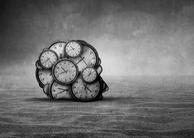Property Dualism & Physicalism: Unclenching the Soldier's Fist
By
2010, Vol. 2 No. 08 | pg. 1/1
IN THIS ARTICLE
KEYWORDS
From the time of the ancient Greek philosophers to modern contemporaries, the mind-body problem has been perpetually debated. With neuroscientific evidence in mind, traditional Cartesian dualism, which establishes that mental and physical substances are fundamentally distinct, has been widely abandoned for more plausible formulations of the theory. Property dualism, a far more convincing claim, suggests that while there exists only one kind of substance, there are fundamental differences in the properties of mind and matter. The formulation of property dualism which denies the causal relationship between physical and mental properties is not the proper formulation to adopt. However, the ontologically non-reductive formulation of property dualism which recognizes that mental properties are causally reducible to physical properties while ontologically irreducible is a true version of dualism. Further Defining Property DualismBefore arguing for the truth of the brand of property dualism referenced above, further definition is required. Property dualism, rather than distinguish between two distinct substances as in substance dualism, distinguishes between two distinct properties: mental and physical. All mental properties are causally reducible to some physical property. Physical states, therefore, give rise to all mental states through causal relationships. Mental states, however, are not ontologically reducible to their physical causes. In his paper “Mental Events,” Donald Davidson argues for a similar position he calls anomalous monism: Anomalous monism resembles materialism in its claim that all events are physical, but rejects the thesis, usually considered essential to materialism, that mental phenomena can be given purely physical explanations. Anomalous monism shows an ontological bias only in that it allows the possibility that not all events are mental, while insisting that all events are physical. […] It is consistent with the view that mental characteristics are in some sense dependent, or supervenient, on physical characteristics. Dependence or supervenience of this kind does not entail reducibility through law or definition. (Davidson 690 – 691)By Davidson’s reasoning, a mental phenomenon, such as the mind, requires some physical predicate on which to supervene. However, this causal link between the mind and its physical substance, in this case the human brain, does not imply an ontological link. The mind, though causally reducible, is ontologically irreducible to some physical or neurobiological state or property. In other words, though the neurobiological structure of the brain is causally responsible for the existence of the mind, it could exist in some non-brain physical predicate. This allows for the “multiple realizability” of mental properties in different physical substances conducive to them. However, property dualism does not allow for immaterial minds, but requires that the mind be based on some sort of physical predicate in order to emerge. This definition of property dualism is consistent and compatible with a combination of supervenience physicalism and token physicalism, which together assert similar claims. The Phantom Pain ArgumentDescartes frequently used the phenomenon of phantom limbs as part of his argument for substance dualism. He reasoned that if pain can be felt in a limb after that limb has ceased to exist, then one’s soul must be capable of persisting after the body has died. Though modern neuroscience has not yet provided a definite answer as to the cause of phantom limbs and the pain associated with them, Descartes incorrectly ignored the physical causes for the mental property pain. Phantom pain serves better in proving property dualism than it does substance dualism. Nearly all amputees experience some kind of phantom limb and the associated pains. In their extensive research on the phenomenon, V.S. Ramachandran and William Hirstein have studied a number of cases in their search to understand “the relationship between the activity of sensory neurons and conscious experience” (Ramachandran and Hirstein). They have found that phantom pains are often associated with the remembered uncomfortable posture of the phantom limb: Sometimes the phantom will also temporarily assume, or even become permanently fixed in, an awkward and painful posture (e.g. the arm is twisted back behind the head). Intriguingly ‘memories’ of the limb’s posture and form prior to amputation often survive in the phantom (Jackson, 1889; Katz and Melzack, 1990); there is even an anecdotal report of a soldier who had a grenade explode in his hand, leaving behind a phantom hand stuck in a permanently clenched and painful posture. (Ramachandran and Hirstein) Ramachandran and Hirstein’s anecdote about the soldier whose phantom hand was permanently stuck in a clenched position serves an argument for property dualism. First one must assume that having one’s hand indefinitely clenched will cause a degree of pain and discomfort. When one’s hand is violently amputated by a detonating grenade, it seems as though that limb should no longer be able to communicate with one’s nervous system; the neurons relating to the hand cease receiving input. However, pain somehow persists. If pain is felt only from the limb, then that limb must be present for pain to persist. But because pain, evidently, can persist without the limb, pain must be felt somewhere else. To declare this phenomenon evidence for a distinct mental substance is a hasty conclusion. The substance dualist cannot, within rational thought, conceive of pain existing without the brain, or some similarly-functioning physical substance. Therefore it seems one can conclude that pain is felt from the brain. However, pain certainly is not the brain, but rather a mental property which is causally reducible to it. The lack of neural information from the hand signaling to the brain that it has been unclenched leads the brain to perceive it as still existing and still clenched, a brain state which causes the mental property pain. The multiple realizability of mental properties in property dualism further explains why pain manifests itself in its respective location on the body. This phenomenon supports that physical events can have some mental properties which are causally reducible to physical properties while simultaneously ontologically irreducible, and therefore that property dualism is true. A successful therapy for phantom pain invented by Ramachandran is further evidence of the theory. Ramachandran developed a so called “mirror box” – a rectangular box with two arm holes on the end and a mirror dividing the center – to retrain the brain of amputation patients. In this treatment, a patient, such as the soldier in question, inserts his good arm, with fist clenched, in one hole and his stub in the other. Looking at the reflection of his good arm in the dividing mirror, his brain is tricked into believing both arms are present. When he releases his good fist, the brain is tricked by the reflection into believing that the phantom fist has also been released. The pain relief is obviously not the releasing of the actual fist, as no such fist exists. The visual stimuli from the mirror box cause a certain physical reaction in the brain, most likely undoing whatever neural corruption lead to the phantom limb. The brain state caused by this neural corruption (or lack of neural information from the hand) is a physical property of the brain and its physical stimuli, and the pain is a mental property of that physical property. Because of the causal reduction of said pain to said brain state, when that brain state ceases, so too does the pain. If a physical event demonstrates properties that are both physical and mental, with mental properties that are casually reducible to physical counterparts but ontologically irreducible, property dualism is true. Phantom pain is a mental property of physical events occurring within the brain. However, this pain is not ontologically reducible to those brain states. Furthermore, a successful therapy for this phantom pain and its neural effects demonstrate such a causal relationship but maintain the non-existence of an ontological link. Therefore, property dualism is true. ObjectionsA reductive physicalist or an identity theorist would object to any property dualist argument involving pain by declaring that pain is necessarily the firing of c-fibers or the brain state caused by them, an ontological reduction of pain to its physical causes. Saul Kripke argues against such a conclusion for his own neo-Cartesian theory. Kripke contends that if pain is simply c-fibers firing, then pain without c-fibers would be inconceivable, but because it is conceivable, Kripke argues that pain must not necessarily be the firing of c-fibers. The phantom pain argument above ratifies Kripke’s argument. If pain is necessarily the firing of c-fibers, then c-fibers are certainly required to feel pain. However, in the case of phantom pain, there are no c-fibers in the given limb, and therefore no firing of c-fibers. If this is the case, pain is not necessarily the firing of c-fibers, and the physicalist or identity theorist’s objection fails. However, property dualism does allow for some form of c-fiber argument; c-fibers firing is a physical event of which pain is a mental property, a similar contention to a supervenience physicalist argument. An objector may claim that if pain supervenes on c-fiber firing, then it cannot exist without c-fibers. However, this observer is ignorant to the allowance of multiple-realizability in property dualism; c-fibers are not a necessary condition for pain, just one physical event of which pain can be a mental property. However, the identity theorist could further object that pain is the brain state caused by the firing of c-fibers, and not just causally reducible to it. However, the multiple-realizability of properties in property dualism sufficiently responds to this. If, as earlier stated, consciousness, or in this case pain, can exist as a result of some other physical substance that is not a brain, then it is necessarily so that a sensation such as pain is not ontologically reducible to a brain state. From John Searle’s frustration over being mistaken as a property dualist comes another potential objection to the phantom pain argument. In his deliberately titled paper “Why I am Not a Property Dualist,” Searle makes the following claim: The key points of disagreement are that I insist that from everything we know about the brain, consciousness is causally reducible to brain processes; and for that reason I deny that the ontological irreducibility of consciousness implies that consciousness is something ‘over and above’, something distinct from, its neurobiological base. No, causally speaking, there is nothing there, except the neurobiology, which has a higher level feature of consciousness. (Searle) From this assertion one can assume that Searle would argue that pain, or in this case phantom pain, is simply a higher level feature of whatever physical cause is responsible for that pain but nothing “over and above” that physical event. However, Searle’s own words make him sound like a property dualist in denial; the very phrase “higher level feature” is inarguably analogous with a similar phrase like “higher level property.” Later in the paper Searle further clarifies his stance: “The property dualist means that in addition to all the neurobiological features of the brain, there is an extra, distinct, nonphysical feature of the brain; whereas I mean that consciousness is a state the brain can be in, in the way that liquidity and solidity are states that water can be in” (Searle). Unfortunately for Searle, his analogy to water only makes him seem more like a property dualist. The fact that water is liquid between 0ᵒ C and 100ᵒ C and solid below 0ᵒ C is a property of water causally reducible to its molecular construction; similarly consciousness is a property of the brain causally reducible to its neurobiological construction. However, there is an important difference Searle ignores between these two properties or “states” as he calls them: the liquid or solid state of water is extended in space and has no subjective qualities; consciousness is not, however, extended in space and does have subjective qualities. So regarding Searle’s argument, his use of the term “state” is equivalent to what property dualists mean by “property,” and the state of the brain, consciousness, he describes is different from the states of water in that it has a unique subjective quality of experience; i.e. it is mental. Therefore, such reasoning could not be used to conclude that the phantom pain argument for property dualism is unsound. In searching for a definitive answer to the mind-body problem, philosophers have developed an impressive array of battling theories, each distinct in its own way, but overlapping its competitors in others. Property dualism represents a non-contradictory marriage between a number of these theories ranging from forms of physicalism to materialism to naturalism. It is the strong relationship between them that allows property dualism to be so immune to objections. It satisfies the major problems of substance dualism while simultaneously silencing skeptics of reductive physicalism. The phantom pain argument presented above is just one of many examples from the mind-body debate which proves that property dualism is true. ReferencesDavidson, Donald. "Mental Events." Heil, John. Philosophy of Mind: A Guide and Anthology. New York: Oxford University Press, 2004. 685-699. Ramachandran, V.S. and William Hirstein. "The perception of phantom limbs: The D.O. Hebb lecture." 11 November 2009 . Searle, John R. "Why I Am Not a Property Dualist." October 2002. Imprint. 15 November 2009 .
Works ConsultedDavidson, Donald. "Mental Events." Heil, John. Philosophy of Mind: A Guide and Anthology. New York: Oxford University Press, 2004. 685-699. Feser, Edward. "Why Searle Is a Property Dualist." 24-28 March 2004. Edward Feser. 7 November 2009 . Heil, John. Philosophy of Mind: A Contemporary Introduction. Routledge, July 2004. Hopp, Walter. "October 14, 2009." PH 266 - Mind, Brain, and Self. Boston University. Boston, 14 October 2009. Jacquette, Dale. Ontology. McGill-Queen's University Press, February 2003. Kim, Jaegwon. Philosophy of Mind (Dimensions of Philosophy) . Westview Press, July 2005. King, Steven A. "Exploring Phantom Limb Pain." Psychiatric Times 1 April 2006. Levine, Joseph. "Matrialism and qualia: the explanatory gap." Heil, John. Philosophy of Mind: A Guide and Anthology. New York: Oxford University Press, 2004. 772-780. McAdoo, Oliver. "Assess the view that mental states are non-reducible properties of brain states ." Arrod.co.uk. 15 November 2009 . O'Connor, Timothy. "Dualist And Agent-Causal Theories." Indiana University. 7 November 2009 . Ramachandran, V.S. and William Hirstein. "The perception of phantom limbs: The D.O. Hebb lecture." 11 November 2009 . Searle, John R. "Why I Am Not a Property Dualist." October 2002. Imprint. 15 November 2009 . Soka University of Humanities. "The Possibility of Religion in a Pro-scientific Society --- The mind-body problem challenged by neuroscience and replied by religion." 2003. Palace Tako. 7 November 2009 . Suggested Reading from Inquiries Journal
Inquiries Journal provides undergraduate and graduate students around the world a platform for the wide dissemination of academic work over a range of core disciplines. Representing the work of students from hundreds of institutions around the globe, Inquiries Journal's large database of academic articles is completely free. Learn more | Blog | Submit Latest in Philosophy |


















